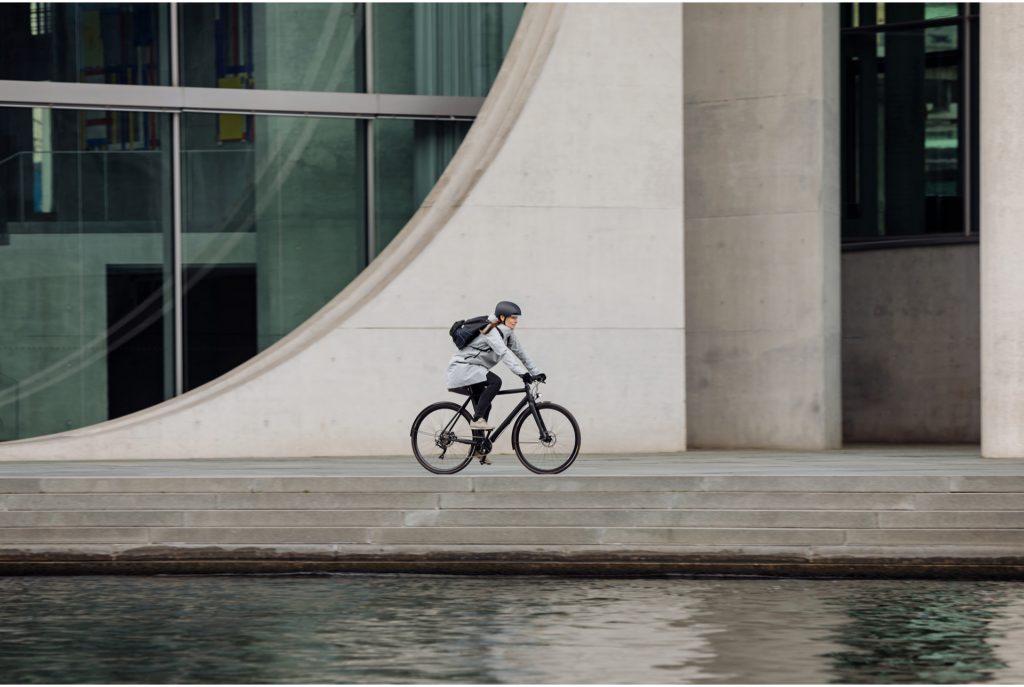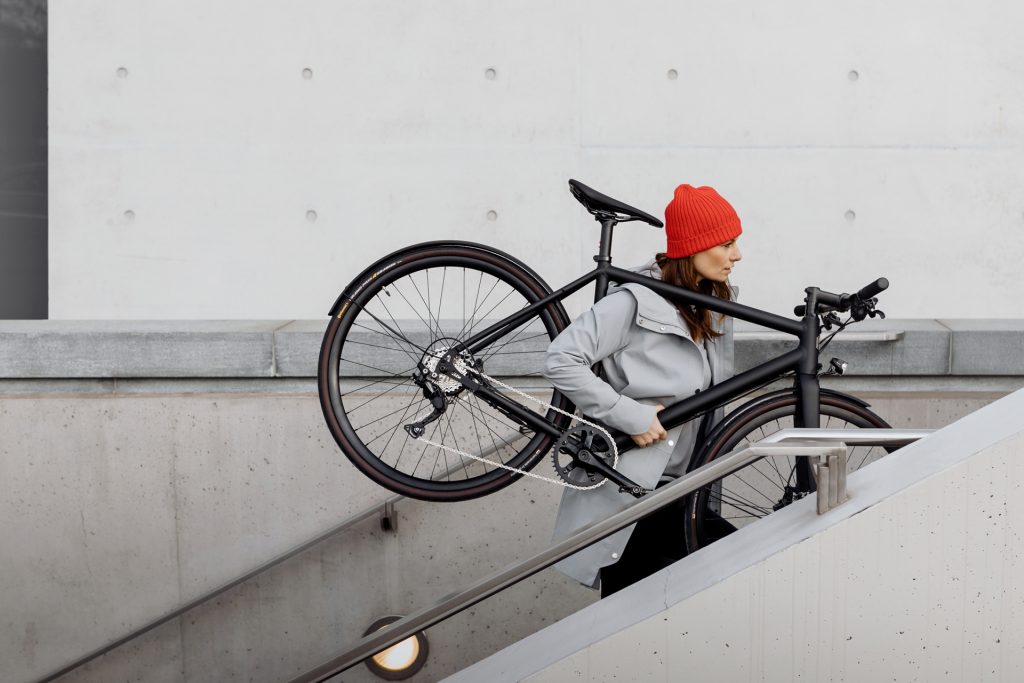Our everyday cycling life has long been electrified. In the street scene, electric variants are increasingly displacing classic bikes and, thanks to a wide variety of models, are becoming attractive to a wide range of target groups. With all this variety, however, there are phases of confusion when it comes to terminology – especially when it comes to the differences between an e-bike and a pedelec (pedal electric cycle) or EPAC (electronically power assisted cycle).
Although the two terms are often used interchangeably, they mean different types of bicycles. While they belong to the same electric mobility family, they are merely siblings within it and are by no means identical.
The differences may not always be visible at first glance, but they are nevertheless crucial: the driving and riding style differ considerably. In this article, we highlight the most important differences between e-bikes and pedelecs and show you which type is more suited to your ideas.
Why Are E-Bike and Pedelecs So Often Confused?
The confusion around both terms is absolutely understandable. Every day we are confronted with new technologies and names that in principle describe similar things – but in detail show clear differences.
The similarities between the two electric bicycle concepts are relatively great – just like close relatives. Both have an electric motor that reaches under the arms during the ride and makes riding easier.
However, there is a fundamental difference in the form of electric assistance: e-bikes accelerate at the push of a button. Regardless of whether you pedal or not. With pedelecs, on the other hand, the motor only provides assistance when you pedal yourself. The former therefore function more like classic mopeds and less like bicycles.
In the German-speaking world, the term e-bike is usually used for both variants as a collective term.
Which E-Bike Variants Are There?
In addition to the different model types such as city bikes or trekking bikes, there are three main groups within the electric bicycle family: e-bike, pedelec and S-pedelec. An overview of the most important features.
E-bike
These electric bikes are equipped with an electric motor that facilitates riding, whether you pedal or not. They allow you to ride electrically completely without your own intervention.
Legal regulations for e-bikes vary from country to country. In some regions, they are considered mopeds or light motorcycles, which requires an appropriate driver’s license, for example. The maximum permitted speed of e-bikes can vary depending on the model and legislation, and usually ranges up to 45 km/h.
Pedelec (Pedal Electric Cycle)
In contrast, pedelecs provide electric assistance only when you pedal. The motor automatically adjusts to your cadence and amplifies your own power to make riding easier.
In many countries, they are considered bicycles, so they are subject to the same traffic rules as conventional bicycles. Most of the EPACs have a maximum assist speed of 25 km/h.
The majority of electrified bikes on our roads fall under this category.
S-Pedelec (Speed EPAC):
S-pedelecs are more powerful than conventional ones and offer higher speed assistance. They can reach speeds of up to 45 km/h, but only with active pedaling.
Because of their higher speed, they are also considered mopeds or light motorcycles in some countries.

E-Bike vs. Pedelec: All Differences at a Glance.
The fact that we use the term e-bike to refer to almost all common electric bicycles doesn’t exactly reduce the confusion and obscures the sometimes significant differences between e-bikes and pedelecs.
Motor Assistance:
- E-bike: The motor assistance is independent of the rider’s pedaling. You can activate the electric motor and ride purely electrically without pedaling.
- Pedelec: In contrast, pedelecs only assist the rider when pedaling. The motor kicks into action as soon as you move the pedals and adjusts its power to your cadence.
Legal Regulations:
- E-bikes: Are classified as mopeds or light motorcycles in many regions because they can be operated without pedal assistance. Thus, e-bikes up to 25 or 45 km/h top speed in some countries require an insurance license plate and, in some cases, the AM driving license class.
- Pedelec: They are usually considered bicycles because they require the rider to pedal. This means they are subject to the same traffic rules as conventional bicycles.
Maximum Speed:
- E-bike: The maximum speed can vary depending on the model and legislation, but often reaches speeds of up to 45 km/h.
- Pedelec: The ones like Ampler’s Stellar model have a maximum speed of 25 km/h. Above this speed, there is no more motor assistance. Speed EPACs, on the other hand, also provide support up to 45 km/h.
E-Bike Advice: What Suits Me Best?
Before buying a bike, you will inevitably be faced with the question of which concept is more suited to you – because the differences between e-bike and pedelec in terms of practical use are sometimes considerable.
First, you need to clarify whether you meet the necessary requirements to be allowed to ride both types of bikes. In many countries e-bikes and S-pedelecs with a speed of up to 45 km/h require an appropriate driver’s license. If you don’t have one, you won’t be able to ride an e-bike (at least not for now).
You should also factor in the additional ongoing costs. In addition to the purchase, some types require an insurance license plate so that they can be used in road traffic.
In addition to these basic considerations about the differences between e-bikes and EPACs, you should consider a few concrete aspects in your decision:
- Intended use: consider how you’ll primarily use your bike. Only for commuting? Or additionally for extended excursions? And how do you prefer to ride? With gentle assistance, when pedaling or fully motorized?
- Budget: Set yourself a realistic budget and calculate follow-up costs such as insurance. Basically, pure e-bikes are usually pricier than an EPAC.
- Motor power: The motor power varies between e-bikes and pedelecs. For example, if you value fast acceleration and higher speeds, you should look for an appropriate model.
FAQ
Do I need a driver’s license for an e-bike or pedelec?
The requirements vary depending on the country. In Germany, for example, you don’t need a driver’s license for pedelecs up to 25 km/h, but you do for e-bikes and Speed EPACs up to 45 km/h.
Do I have to wear a helmet?
The helmet requirement depends on the motor power and speed. The basic rule is that riders on an S-pedelec or e-bike over 25 kilometers per hour require a helmet.
How fast can I ride a pedelec?
A normal EPAC has a maximum speed of 25 km/h in most countries. Above this speed, the motor assistance ends – but you can, of course, pedal further yourself and reach a higher speed.
Conclusion
The e-bike has become the universal term for all electric bicycles – but it only refers to bikes with a top speed of up to 45 km/h that accelerate even without pedaling.
However, the bike that actually first comes to mind when we think of an e-bike is usually a pedelec: Bikes with electric assistance that kicks in when we pedal and accelerates us up to 25 km/h.
Ultimately, it’s up to you to decide which concept suits you better. At Ampler, you’ll find stylish and sturdy EPACs for every taste with five different frame concepts. The lightweight bikes are perfect for an extra dose of freedom and adventure in our everyday mobility. Whether you like the sporty Curt model or the chilled-out Juna, you’ll be surprised how relaxed and accessible sustainable transportation can be.
As big as the differences between e-bikes and pedelecs may be in detail – with an Ampler you will reliably forget them and only enjoy the pleasure of electric driving.

